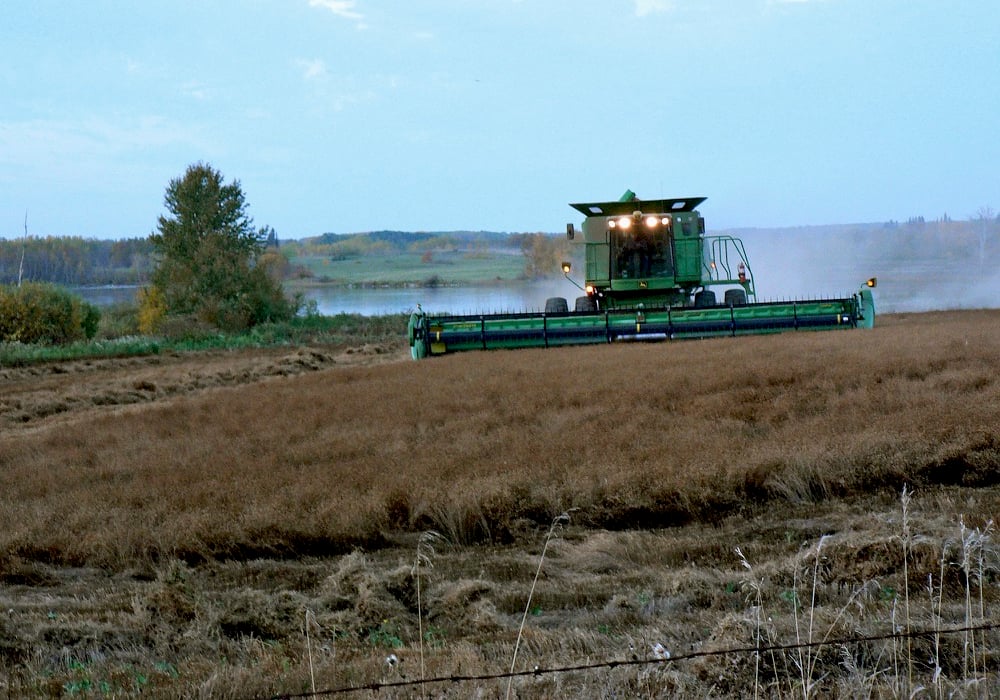HUMBOLDT, Sask. — As the CWB crop tour moves into central-Saskatchewan from Manitoba, it becomes clear there is a fine line when it comes to moisture conditions.
Wheat fields outside Yorkton, Sask., saw opposite conditions compared to the previous day, with too much moisture causing damage to crops.
The ground was dry and cracked, but the field had been flooded out.
“Too much rain early, and it drowned out. They didn’t get any rain since then and it turned dry,” says Chris Birk, a farmer and CWB crop tour guide.
Read Also

Most of Manitoba harvest wraps up for 2025
Manitoba Agriculture issued its final crop report of 2025, showing the overall provincewide harvest at 97 per cent complete as of Oct. 20. Nearly all major crops have finished combining, with 37 per cent of Manitoba’s sunflowers finished, plus 71 per cent of grain corn and small amounts of soybeans and potatoes left to do.
He says wheat can only sit in water up to seven days until the plant dies.
The rain stressed the crop and then it baked, which is why the field looked so thin, Birk says.
Moving north toward Canora, fields of drowned out canola could be seen with stretches of brown and puddles sitting in the field.
Hail hit a neighbouring wheat field so hard Chuck Fossay, a farmer and crop tour participant, estimated the farmer had lost about 60 percent of his field.
Many of the plants had hangers — the plants’ heads were drooping toward the ground due to broken stems.
“Once the stem gets kinked like that, nutrients can’t get to the head. It’ll turn white and die,” Fossay says.
Hail had also stripped plants in canola and wheat fields on the same stretch of highway.
Thinner fields became the new normal for the tour as conditions didn’t improve moving toward Buchanan, Sask. Moisture left fields in the area with visible rows and short plants.
Cattails and weeds could also be seen in fields, as were many drowned out crops, which tour participants hadn’t anticipated at the beginning of the day.
Most had thought Saskatchewan would be offering up drier conditions than the ones seen.
“Flooded out, flooded out, pothole,” says Bill Altenhofen, a trader and tour participant as we passed through the fields.
It’s not all doom and gloom for Saskatchewan’s crops, though. As the tour moved toward Humboldt, fields looked thicker, but plant heads were smaller and kernel counts were between 14 and 34.
Soil conditions near Quill Lake were drier upon first look, but digging below the ground it wasn’t as wet as tour participants had thought.
The wheat fields were also healthier and thicker than ones seen earlier in the day.
Concurrent crop tours in Saskatchewan and Alberta are taking place, and all three groups will be meeting in Regina tomorrow to discuss this year’s crops projections in Western Canada.














